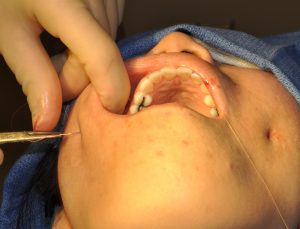Cheek dimples have been proven by anatomic studies to be the result of an underlying muscle defect or unique type of muscular anatomy. They occur because of a split or defect in the zygomaticus muscle which runs from the underside of the cheek bone down into the upper lip. While appearing as a slight indentation at rest, the act of smiling contracts the muscle and pulls the overlying skin inward deepening the dimple.

Dr. Barry Eppley
Indianapolis, Indiana


